Welcome to my comprehensive guide on hillstream loaches, a fascinating aquatic fish species belonging to the loach family. These freshwater fish are known for their distinctive features, unique behavior, and specific care requirements. Whether you are a beginner or an experienced hobbyist, this guide will provide you with all the essential information you need to successfully keep and care for hillstream loaches in your home aquarium.
Table of Contents
Key Takeaways:
- Hillstream loaches are unique freshwater fish that require specific care and habitat conditions.
- They originate from the fast-moving streams of Asia and are part of the loach family.
- These fish have a streamlined body and a distinctive reticulated pattern.
- Hillstream loaches thrive in well-oxygenated water with a neutral to slightly alkaline pH level.
- They are peaceful fish that can be kept with other non-aggressive species, snails, shrimp, and live plants.
Size and Appearance of Hillstream Loaches
Hillstream loaches are fascinating freshwater fish known for their unique size and appearance. These fish typically grow to be 2 to 3 inches in length, making them a relatively small species. However, their small size doesn’t take away from their remarkable physical features.
The most striking aspect of hillstream loaches is their flat, streamlined body. This special adaptation allows them to navigate through fast-flowing currents with ease. Along the underside of their body, they have a ventral disc, which functions as a suction cup, enabling them to cling onto surfaces in their habitat. This incredible trait helps them withstand the strong currents in their natural environment.
But it’s not just their unique body shape that’s worth noting. Hillstream loaches also have a visually stunning appearance. Their bodies sport a reticulated pattern of black and yellowish-green spots and stripes. This intricate pattern serves as a form of camouflage, allowing them to blend in seamlessly with their surrounding rocks and substrate.
“Hillstream loaches possess a flat, streamlined body and a captivating reticulated pattern, which makes them resemble miniature freshwater stingrays.”
Their streamlined shape and reticulated pattern give them an undeniable resemblance to miniature freshwater stingrays, making them an eye-catching addition to any aquarium.
| Characteristic | Description |
|---|---|
| Size | 2 to 3 inches |
| Body Shape | Flat and streamlined |
| Ventral Disc | Allows clinging to surfaces |
| Reticulated Pattern | Black and yellowish-green spots and stripes |
Origin and Habitat of Hillstream Loaches
Hillstream loaches, scientifically known as Sewellia lineolata, are unique freshwater fish that originate from the fast-flowing streams and rivers of Asia. These fascinating fish are commonly found in Vietnam, Laos, and Cambodia, thriving in the shallow areas of rivers with strong currents and smooth rocks.
In their natural habitat, hillstream loaches inhabit Asian streams and rivers, which provide them with the ideal conditions for their survival. These water bodies are characterized by fast-flowing currents, well-oxygenated water, and a diverse ecosystem of algae, small invertebrates, and biofilm that grow on rocks and other substrates.
Their ability to adapt to this specific habitat makes them one of the most interesting species to keep in aquariums. Mimicking their natural environment is essential to ensure their well-being and happiness in captivity.
To learn more about the origin and habitat of hillstream loaches, take a look at the following table:
| Origin | Habitat |
|---|---|
| Vietnam, Laos, Cambodia | Fast-flowing streams and rivers |
Hillstream Loach Care Guide
Hillstream loaches require specific care to thrive in an aquarium setting. To ensure their well-being, it is crucial to create an environment that closely mimics their natural habitat. Here are some essential care tips for keeping hillstream loaches:
- Aquarium Setup: Provide a well-oxygenated aquarium with a strong water flow to replicate the fast-moving streams they inhabit in the wild. The tank should be at least 20 gallons in size to accommodate a small school of hillstream loaches.
- Water Parameters: Maintain proper water parameters to keep the loaches healthy. Aim for a pH range of 6.5 to 7.5, and ensure the water temperature is between 72°F and 82°F. Regular water testing is crucial to monitor and adjust these parameters as needed.
- Filtration and Aeration: Use a quality filter system to maintain water quality and ensure proper aeration. Hillstream loaches thrive in well-oxygenated water, so efficient filtration is vital.
- Lighting: Provide appropriate lighting to support the growth of live aquatic plants. Hillstream loaches enjoy having cover provided by plants and decorations.
- Aquarium Plants and Decorations: Incorporate rocks, smooth substrate, and driftwood in the tank to mimic their natural habitat. Live aquatic plants, such as Java moss or Anubias, offer additional cover and contribute to the overall aesthetics of the tank.
- Tank Maintenance: Regularly perform water changes, clean the filter, and remove any debris or uneaten food from the tank. Keeping the aquarium clean is crucial for the health of hillstream loaches.
- Substrate: Choose a substrate that is smooth and non-abrasive, as hillstream loaches have a delicate underside. Fine sand or small-grained gravel is ideal.
- Community Tank Mates: Hillstream loaches are peaceful and can be kept with other non-aggressive fish species. Consider companions that prefer similar water conditions, such as danios, rasboras, or small catfish.
- Schooling Fish: Hillstream loaches are social fish and thrive when kept in schools of at least three individuals. Maintaining a small group encourages natural behavior and minimizes stress.
Expert Tip:
“Creating a flowing environment with natural elements is key to providing exceptional care for hillstream loaches. Remember to regularly monitor water parameters and always strive to maintain stable conditions.”
By following these care guidelines, you can provide a suitable home for hillstream loaches and ensure their well-being in your aquarium.
Hillstream Loach Feeding Habits
Feeding hillstream loaches is an important aspect of their care. These unique fish have specific dietary requirements that need to be met for their optimal health and well-being. Understanding their feeding habits will help you provide them with a varied and nutritious diet.
The Importance of Algae
Hillstream loaches are primarily herbivorous and graze on algae and biofilm in the aquarium. Algae serves as a crucial part of their natural diet, providing essential nutrients and fiber. The presence of live algae in their tank is beneficial for their overall health.
Live Foods for a Balanced Diet
In addition to algae, hillstream loaches also require a variety of live foods to ensure they receive all the necessary nutrients. Some suitable live food options for these fish include:
- Insect larvae: Hillstream loaches readily consume insect larvae such as bloodworms, mosquito larvae, and blackworms.
- Tubifex: These small, sludge-dwelling worms are another excellent protein-rich food source for hillstream loaches.
- Daphnia: Daphnia, also known as water fleas, are tiny crustaceans that are an ideal food for these fish.
- Frozen/live brine shrimp: Brine shrimp are a popular choice for many aquarium fish, including hillstream loaches.
By incorporating a variety of live foods into their diet, you can provide them with a well-rounded and balanced nutritional intake.
Flakes, Pellets, and Algae Wafers
Hillstream loaches can also be fed commercially prepared fish flakes and pellets. Look for high-quality, nutrient-rich options specifically formulated for herbivorous fish. These dry foods can be supplemented with algae wafers, which are readily available in pet stores. Algae wafers are specifically designed to meet the nutritional needs of algae-eating fish and provide additional fiber.
It is important to note that hillstream loaches are bottom feeders and spend most of their time grazing on the substrate. Therefore, sinking foods are recommended to ensure they have access to their food throughout the day.
Feeding Options for Hillstream Loaches
| Food Option | Benefits |
|---|---|
| Algae | Provides essential nutrients and fiber |
| Insect larvae | Protein-rich food source |
| Tubifex | Another protein-rich option |
| Daphnia | Small crustaceans for variety |
| Frozen/live brine shrimp | Highly palatable and nutritious |
| Fish flakes and pellets | Convenient dry food option |
| Algae wafers | Specifically formulated for herbivorous fish |
Providing a varied diet that includes a combination of algae, live foods, and commercially prepared options will help ensure the nutritional needs of your hillstream loaches are met. Observing their feeding behavior and adjusting the diet accordingly will help promote their overall health and longevity.
Hillstream Loach Breeding
Breeding hillstream loaches can be challenging but rewarding for dedicated fishkeepers. Here, I’ll guide you through the process of breeding these unique freshwater fish.
Breeding Tank Setup: To successfully breed hillstream loaches, it is crucial to provide them with a separate breeding tank. The tank should have a substrate of fine sand or small gravel, resembling their natural environment.
Water Temperature and pH Level: Maintaining the right water conditions is essential for hillstream loach breeding. The water temperature should be set between 72°F to 82°F (22°C to 28°C) to stimulate their breeding behavior. Additionally, keep the pH level neutral to slightly acidic, ranging from 6.5 to 7.5.
Male and Female Behavior: Breeding behavior in hillstream loaches involves a courtship ritual performed by the males to attract females. Males typically perform a “dance” by swimming around the tank and displaying vibrant colors. If successful, a female will respond positively.
Egg Laying and Hatching: Once the female is ready to lay eggs, she will deposit them in a nest prepared by the male. The adhesive eggs will attach to the substrate or rocks in the tank. The male diligently guards the eggs until they hatch, which usually takes around 5 to 7 days.
Raising Fry: After hatching, the fry will attach themselves to the substrate using a specialized adhesive organ. During this stage, they feed on small organisms and require a proper diet to grow. It is recommended to provide infusoria or specially formulated fry food to ensure their nutritional needs are met.
Table: Hillstream Loach Breeding Overview
| Step | Description |
|---|---|
| 1 | Set up a separate breeding tank with fine sand or small gravel substrate. |
| 2 | Maintain a water temperature of 72°F to 82°F and a pH level of 6.5 to 7.5. |
| 3 | Observe male courtship behavior and female response. |
| 4 | Female deposits adhesive eggs in a nest prepared by the male. |
| 5 | Male guards the eggs until they hatch in 5 to 7 days. |
| 6 | Fry attach to the substrate and feed on small organisms. |
Hillstream Loach Behavior
When it comes to behavior, hillstream loaches are truly fascinating to observe in the aquarium. These peaceful fish are bottom-dwellers, spending most of their time swimming in groups. They are known for their curious and interactive nature.
One of the most remarkable aspects of their behavior is their ability to stick to surfaces in fast-flowing currents and climb vertical surfaces. This is made possible by their unique physical characteristics, including their flat body and strong suckermouth. Whether it’s clinging to rocks or plants, hillstream loaches have an impressive grip that allows them to navigate their environment with ease.
Furthermore, hillstream loaches are social fish that thrive when kept with other compatible aquarium mates. They are known to swim in tight-knit groups, exhibiting a sense of camaraderie and companionship. Being in the company of their own kind and other peaceful fish species provides them with a sense of security and contentment.
“Hillstream loaches are inquisitive creatures, always exploring their surroundings and investigating every nook and cranny. Their playful and inquisitive nature adds a lively and captivating element to any aquarium.”
Their schooling behavior and curiosity make them an interesting addition to community tanks, as they interact with other fish and confidently explore their surroundings. Their constant motion and rhythmic swimming create a dynamic and visually appealing display in the aquarium.
Hillstream Loach Behavior at a Glance:
- Peaceful fish that swim in groups
- Bottom-dwelling and curious in nature
- Capable of sticking to surfaces in fast-flowing currents and climbing vertical surfaces
- Interactive and inquisitive, always exploring their environment
- Social fish that thrive with other compatible aquarium mates
| Behavior Traits | Description |
|---|---|
| Peaceful | Hillstream loaches are known for their peaceful nature, making them great tank mates for other non-aggressive fish species. |
| Bottom-Dwelling | These fish prefer to stay close to the substrate, where they can find food and interact with the environment. |
| Curious | Hillstream loaches are naturally curious creatures and will eagerly investigate their surroundings, making them an entertaining addition to any aquarium. |
| Sticking to Surfaces | With their strong suckermouth, hillstream loaches can attach themselves to various surfaces, allowing them to navigate their environment with ease. |
| Swimming in Groups | These social fish prefer to swim in groups, creating a harmonious dynamic in the aquarium. |
| Climbing Vertical Surfaces | Hillstream loaches have the ability to climb vertical surfaces, adding an impressive element to their behavior repertoire. |
Hillstream Loach Tank Setup
When it comes to setting up a tank for hillstream loaches, there are several options to consider based on their compatibility with other fish species and the desired environmental conditions. Whether you have a goldfish tank, a coldwater setup, a river tank that mimics their natural habitat, or a tropical community tank, each setup requires specific considerations to create an optimal environment for these unique fish.
In a goldfish tank, it is important to ensure that the temperature remains suitable for both goldfish and hillstream loaches. Goldfish thrive in cooler water temperatures, typically between 60°F to 70°F, so it’s crucial to find a balance that works for both species. Adequate filtration and aeration are crucial in goldfish tanks to maintain water quality and oxygenation.
A coldwater setup is ideal for hillstream loaches as they naturally inhabit cooler mountain streams. The water temperature should range from 68°F to 74°F, and the pH level should be neutral to slightly acidic. Ensuring good water flow and oxygenation, combined with a natural-looking habitat, will promote the well-being of the loaches in a coldwater environment.
A river tank setup aims to recreate the natural habitat of hillstream loaches, specifically the fast-flowing streams and rivers in Asia. Simulating strong currents, rocks, and smooth substrate will help replicate their native environment. Maintaining water parameters within their preferred range, including a pH level of 6.5 to 7.5 and a temperature range of 72°F to 82°F, will ensure their comfort and well-being in a river tank.
If you prefer a tropical community tank, hillstream loaches can coexist with a variety of tropical fish species. However, it is crucial to consider the compatibility of tank mates in terms of temperament, size, and water parameters. Optimal water conditions for a tropical community tank include a temperature range of 72°F to 82°F and a neutral to slightly acidic pH level.
Regardless of the tank setup you choose, there are a few key considerations that apply to all hillstream loach tanks. These include:
- Proper filtration: Hillstream loaches require good water circulation and oxygenation. A strong filter is essential to maintain optimal water quality.
- Adequate lighting: While hillstream loaches appreciate subdued lighting, it is essential to provide enough light to support the growth of live aquatic plants in the tank.
- Tank decorations: Rocks, smooth substrate, and driftwood will provide hiding spots and surfaces for hillstream loaches to attach themselves and simulate their natural behavior.
By carefully considering the tank setup and meeting the specific requirements of hillstream loaches, you can create a thriving and visually appealing environment for these fascinating fish.
| Tank Setup | Temperature Range (°F) | pH Range |
|---|---|---|
| Goldfish Tank | 60-70 | Neutral |
| Coldwater Setup | 68-74 | Neutral to slightly acidic |
| River Tank | 72-82 | 6.5-7.5 |
| Tropical Community Tank | 72-82 | Neutral to slightly acidic |
Tank Setup Comparison
In a goldfish tank, maintaining a suitable temperature for both goldfish and hillstream loaches can be a bit challenging. However, with proper filtration and aeration, it is possible to create a harmonious environment for both species.
A coldwater setup provides hillstream loaches with the ideal temperature range they require, making them thrive in a cooler environment.
A river tank setup allows for the closest replication of the natural habitat of hillstream loaches, providing them with strong water flow and rock formations to cling to.
A tropical community tank opens up the possibility of keeping hillstream loaches alongside vibrant tropical fish species. However, it is crucial to ensure compatibility in terms of temperament, size, and water parameters.
Hillstream Loach Food and Diet
When it comes to feeding hillstream loaches, it’s important to understand their natural diet and provide them with a suitable aquarium diet. In their natural habitat, hillstream loaches graze on algae, insect larvae, and other small organisms found on rocks and other substrates. Mimicking this diet in the aquarium is essential for their health and well-being.
To ensure a balanced diet, you can offer a variety of foods to your hillstream loaches. Here are some options:
- Algae Wafers: Algae wafers specifically designed for bottom-dwelling fish like hillstream loaches are readily available in pet stores. These wafers contain a high percentage of algae and provide essential nutrients for your fish.
- Flakes and Pellets: High-quality fish flakes and pellets can also be included in their diet. Look for products that are suitable for bottom feeders and have a good mix of proteins and plant matter.
- Frozen Foods: Offer frozen foods like brine shrimp, daphnia, and bloodworms as occasional treats. These foods are rich in proteins and can provide variety in your loaches’ diet.
- Blanched Vegetables: Vegetables like spinach, zucchini, and cucumber can be blanched and offered to your loaches. They provide valuable fiber and can help promote digestion.
It’s important to note that hillstream loaches are bottom feeders and will spend most of their time grazing on the substrate. Therefore, sinking foods are recommended to ensure that they have easy access to their meals. These sinking foods will reach the loaches even if they are hidden under rocks or other tank decorations.
In addition to the main food sources mentioned above, hillstream loaches also consume biofilm and infusoria. Biofilm is a thin layer of microscopic organisms that naturally develop on surfaces in the aquarium. Infusoria refers to a mix of tiny aquatic organisms, including protozoans and microworms. These organisms contribute to a healthy ecosystem in the tank and provide a supplemental food source for your loaches.
Remember to feed your hillstream loaches in small amounts multiple times a day, as they have a continuous grazing behavior. This feeding strategy mimics their natural foraging habits and promotes a healthier intake of nutrients.
By providing a diverse and nutritious diet that includes algae wafers, flakes, pellets, frozen foods, blanched vegetables, and ensuring the presence of biofilm and infusoria, you can keep your hillstream loaches happy and healthy in the aquarium.
Conclusion
In conclusion, hillstream loaches are fascinating and unique freshwater fish that require specific care and environmental conditions to thrive in an aquarium. Their flat and streamlined bodies, along with their interesting physical characteristics, make them a captivating addition to any tank. Creating an aquarium setup that closely mimics their natural habitat is crucial for their overall well-being.
Proper hillstream loach care involves providing them with a varied diet that includes both live and prepared foods, as well as maintaining a suitable tank environment. These fish are peaceful and can be kept with other compatible species, but it is important to consider their social nature and keep them in schools. Providing a tank size of at least 20 gallons and maintaining optimal water parameters with a pH range of 6.5 to 7.5 will ensure their health and vitality.
By giving the necessary attention and care to hillstream loaches, you can enjoy their curious behavior, graceful swimming, and their ability to stick to various surfaces. These captivating fish have a lot to offer and can live a long and healthy life in a well-maintained aquarium. If you’re looking for a unique fish species to add to your collection, hillstream loaches are definitely worth considering.
FAQ
What is the size and appearance of hillstream loaches?
Hillstream loaches typically grow to be 2 to 3 inches in length. They have a flat, streamlined body with a ventral disc, and their bodies are adorned with a reticulated pattern of black and yellowish-green spots and stripes.
What is the origin and habitat of hillstream loaches?
Hillstream loaches are native to the fast-flowing streams and rivers of Asia, particularly in Vietnam, Laos, and Cambodia. They are commonly found in shallow river areas with strong currents and smooth rocks.
How do I care for hillstream loaches in an aquarium?
Hillstream loaches require a well-oxygenated aquarium with a strong water flow. They prefer a tank size of at least 20 gallons and water with a pH range of 6.5 to 7.5. Filtration, aeration, and regular tank maintenance are important for their care. They can be kept with other peaceful fish species and prefer to be kept in schools.
What do hillstream loaches eat?
Hillstream loaches are omnivores and graze on algae and biofilm in the aquarium. They also eat various kinds of live foods, such as insect larvae, tubifex, daphnia, and frozen or live brine shrimp. They can also be fed fish flakes or pellets, as well as algae wafers.
How do hillstream loaches breed?
Breeding hillstream loaches can be challenging. They are kept in a separate breeding tank with specific water temperature and pH level requirements. Male hillstream loaches perform a mating dance, and the female lays her eggs in a nest prepared by the male. The male guards the eggs until they hatch, which takes around 5 to 7 days.
What is the behavior of hillstream loaches?
Hillstream loaches are peaceful, bottom-dwelling fish that swim in groups. They are curious and interactive, with the ability to stick to surfaces in fast-flowing currents and climb vertical surfaces.
How should I set up a tank for hillstream loaches?
Hillstream loaches can be kept in various tank setups, including a goldfish tank, coldwater setup, river tank, or tropical community tank. Each setup requires specific considerations such as water temperature, filtration, and tank decorations.
What is the food and diet of hillstream loaches?
Hillstream loaches have a natural diet that includes algae, insect larvae, and other small organisms. In an aquarium, they can be fed a combination of algae wafers, flakes, pellets, frozen foods, and blanched vegetables.
What are some key points about hillstream loach care?
Hillstream loaches require specific care and environmental conditions to thrive in an aquarium. They prefer a well-oxygenated tank with a strong water flow and should be kept in schools. Proper tank maintenance, a varied diet, and a mimicry of their natural habitat are essential for their well-being.
References
Aquarium and Tropical Fish Association (ATA)
National Aquarium Society (NAS)
American Livebearer Association
Ornamental Aquatic Trade Association (OATA)
International Loach Association
Please check other articles on this website, I have listed some of them here:
Everything You Need to Know About Caring for Blue Zebra Cichlids in Your Aquarium
Everything You Need to Know About Torch Coral: A Stunning Addition to Your Marine Aquarium
The Fascinating Penguin Tetra: Thayeria boehlkei (2023-24)
The Ultimate Guide to Scarlet Badis Care and Breeding
The Ultimate Bamboo Shrimp | Flower Shrimp Guide Which You Dont Want to Miss Out 2023
The Vibrant and Captivating Strawberry Peacock Cichlid: A Guide to Care and Maintenance
Electric Blue Acara: The Ultimate Guide To Care And Keeping
Best Fish for a 40 Gallon Tank: Top Choices for a Thriving Aquarium
Simple Guide to Easy-to-Care-for Aquarium Plants
Discover the Diverse Corydoras Catfish Varieties- A Guide
Get to Know Various Types of Algae Eaters
Master Guide: Best Water Parameters for Goldfish Care 2023-24
Mastering Black Ghost Knife Fish Care: A Comprehensive Guide
Optimal pH Levels for Tropical Fish: Essential Aquarium Guide
Discovering Freshwater Snail Species: An In-depth Guide
Expert Tips for Breeding Guppies: Keys to Successful Fishkeeping
Discover Peaceful Community Fish: Your Guide to Calm Aquatics
Ultimate Guide to Live Food for Betta Fish — Healthy Choices
Complete Guide to Your Perfect Cichlid Tank Setup
Your Guide to the Best Substrate for Planted Aquariums
Essential Guide to Discus Fish Care: Help Your Pets Thrive!
Grow Your Own Eden: Beginner-Friendly Aquascaping Plants Guide
Perfect Neon Tetra Tank Mates: Guide to Aquarium Harmony
Product Review of Eheim Classic vs Professional
The Ultimate Guide to Discus Fish Care
What Fish Can Live With Discus?
Ideal pH for Discus Fish | Aquarium Water Guide
How to Sex Discus Fish?: A Simple Guide for Hobbyists
Complete Discus Fish Tank Setup Guide
Can Discus Fish Live With Angelfish? The Complete Guide
Discus Diet Guide: What Do Discus Fish Eat?
Are Discus Fish Hard to Keep? Insights & Tips.
Optimal Discus Fish Water Parameters Guide
Discus Fish Size Guide 2024: How Big Do Discus Fish Get?
Ultimate Million Fish Guppy Care Guide 2024
Simple Guide to Easy-to-Care-for Aquarium Plants
Grow Your Own Eden: Beginner-Friendly Aquascaping Plants Guide
Hornwort Aquarium Plants: The Ultimate Guide to Care and Maintenance
Aquarium Equipment for Beginners: The Complete Checklist
Feeding Your Aquarium Fish: The Complete Guide
Common Beginner Fishkeeping Mistakes and How to Avoid Them!
Aquarium Plants for Beginners: Easy Care and Beautiful Options
Keeping Your Aquarium Water Clean and Healthy: The Complete Guide
Breeding Aquarium Fish: A Comprehensive Guide
Marine Aquariums: The Ultimate Challenge for Experienced Hobbyists
Tech in the Tank: Must-Have Gadgets for Aquarium Automation
Dwarf Sucking Catfish : The Ultimate Guide to Keeping and Caring for Oto Catfish
The Science of Aquarium Water Chemistry: Understanding pH, KH, and GH
Veiltail Goldfish: The Exquisite Beauty of Flowing Fins
Perfect Neon Tetra Tank Mates: Guide to Aquarium Harmony
Goldfish Care: Beyond the Bowl – Everything You Need to Know
Master Red Tail Shark Care: Tips, Tank Mates & Surprising Traits!
Sheepshead Wrasse Facts & Habitat Guide
Unveiling the Unique Asian Sheepshead Wrasse: A Fascinating Reef Fish with Quirky Behavior
Peacock Wrasse: A Dazzling Addition to Your Aquarium
Vibrant Wrasse Fish: Care Guide & Species Info
Bluestreak Cleaner Wrasse – Vibrant Reef Ally
Coris Wrasse Care Guide for Saltwater Aquariums
Melanurus Wrasse Care Guide & Habitat Tips
The Ultimate Guide to Kuhli Loach
The Ultimate Guide to Popular Loach Species for Freshwater Tanks
Yoyo Loach: The Ultimate Guide to This Fun and Friendly Fish
How to Care for Clown Loaches: The Ultimate Guide for Aquarium Lovers
Optimal Times to Feed Tropical Fish Daily
How to Care for Dojo Loach, the Friendly and Playful Aquarium Fish
How to Care for Zebra Loach: The Ultimate Guide for Beginners
Fu Manchu Lionfish: The Most Beautiful and Mysterious Fish in the Ocean?
The Ultimate Guide to Lionfish Sting: Symptoms, Treatment, and Prevention
Caring for Dwarf Lionfish: Tips & Facts
I am a passionate aquarist with over 30 years of hands-on experience in fishkeeping. My journey began at a young age, collecting fish from the wild and learning through experimentation. Specializing in tropical fish, I bring a deep understanding of the hobby to FishKeepingMadeSimple. The site provides honest, detailed reviews of essential products and accessories to help fellow enthusiasts create the best environments for their fish.

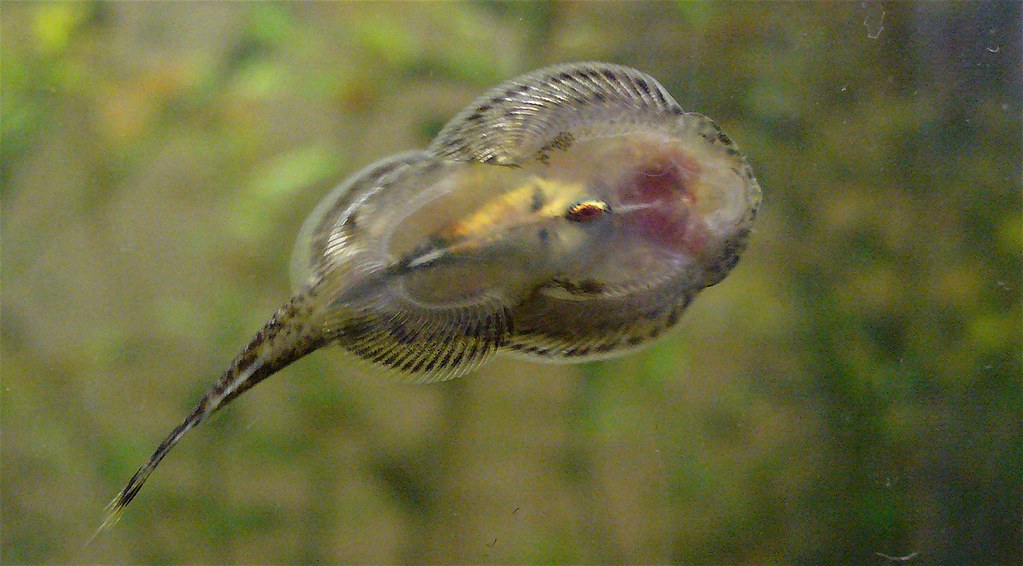
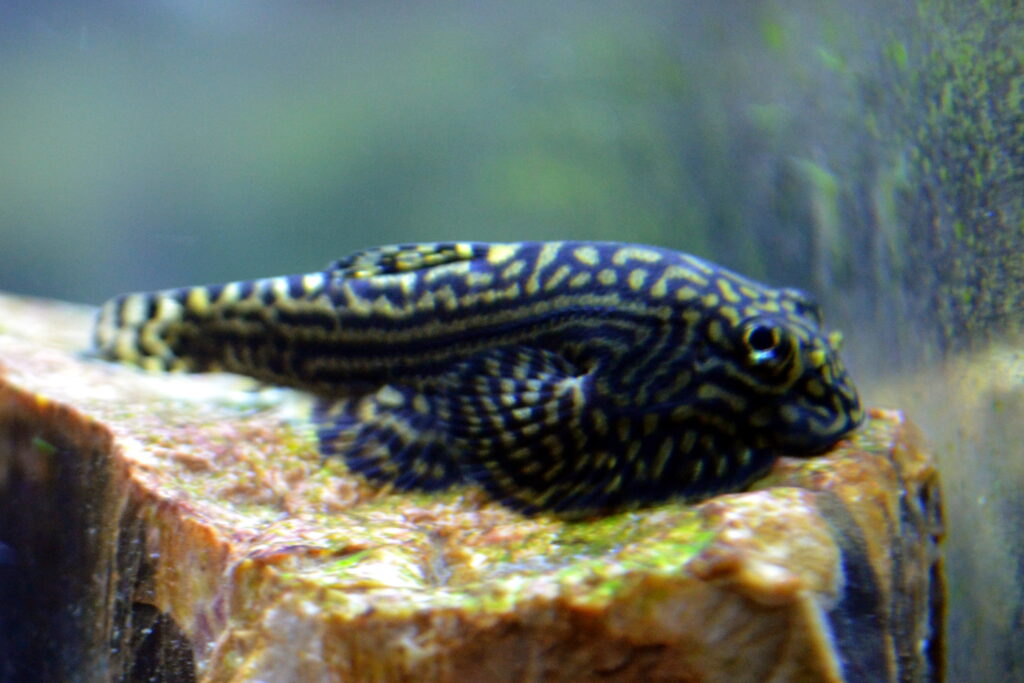
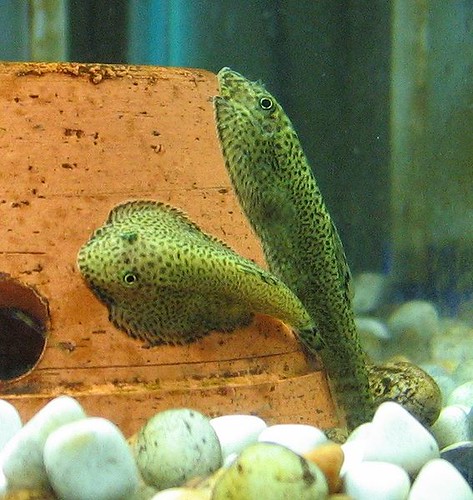








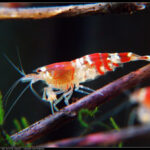

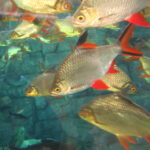
[…] of caring for and breeding this unique species will not only contribute to the well-being of the Blue Phantom Pleco but also enhance the enjoyment and satisfaction of keeping these mesmerizing […]
[…] environment in which your koi fish live can present unique challenges and impact their lifespan. Harsh weather conditions, predators, and inadequate pond […]
[…] you’re experienced in Killifish breeding or a newbie wanting to add these unique fish to your collection, this guide is your go-to resource. Inside, you’ll find step-by-step […]
[…] Setting up the ideal tank for Dragon Rope Fish requires careful consideration of tank mates, diet, size, and other factors. Providing the proper environment and diet is essential for the care of these unique fish. […]
[…] loaches are peaceful fish that get along well with other freshwater species such as tetras, danios, and rasboras. […]